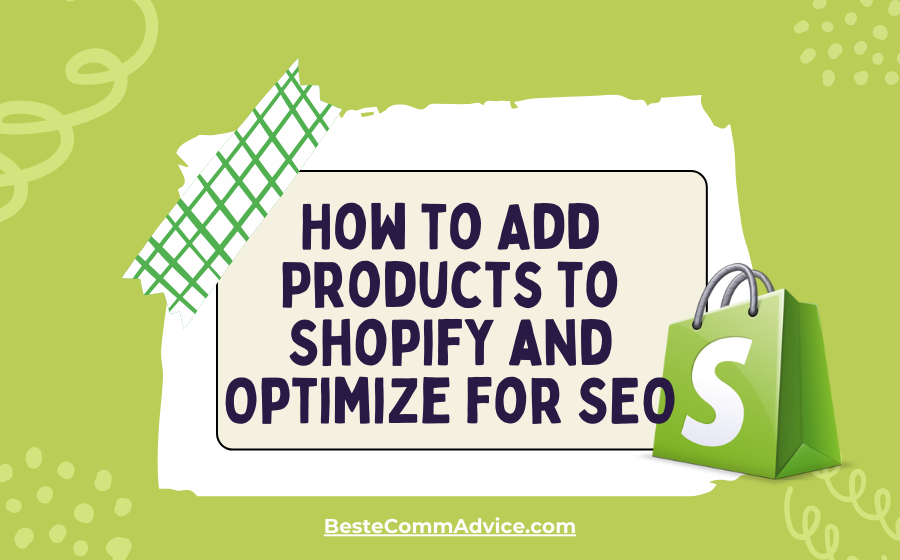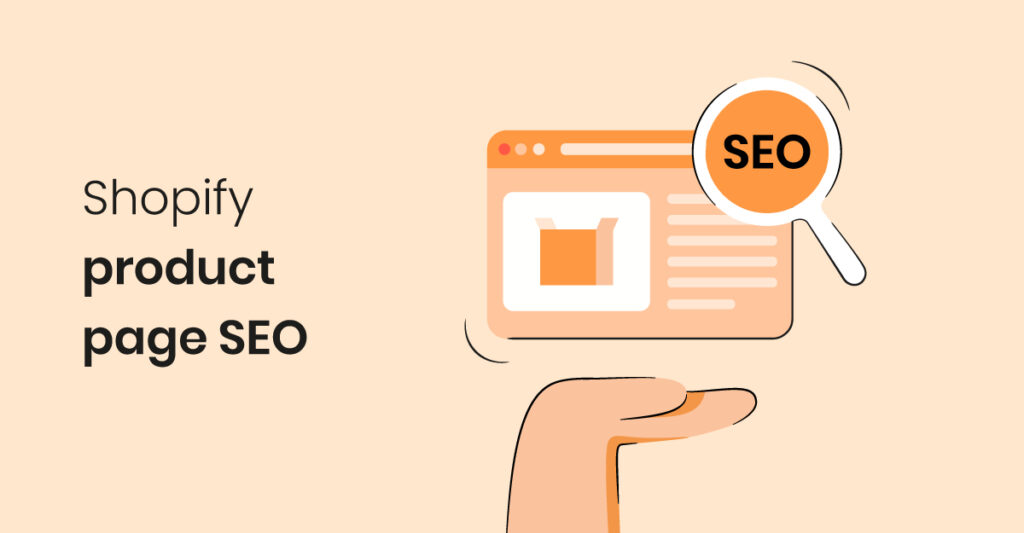
How to Add Products to Shopify and Optimize for SEO
15 October 2024Shopify is one of the best e-commerce stores that would help you promote your business and reach more people who may need such products, but the right strategies and steps to optimize for SEO on your shopify store must be done.
Content publishing and provision is not enough. You need to comprehend how SEO for Shopify works or the best way to employ it. Brand, user experience, and design are critical on your website SEO. Read further and learn some of the best Shopify product page SEO practices for your business.
How to Add Products to Your Shopify Store

You can add products to your shopify store with easy steps. However, optimizing your product listing is important to generate revenue and sales. You need to know about important strategies to get you started.
- Log in your Shopify Account: Login to your shopify account and enter your credentials.
- Product Selection: Go to the main dashboard to look for “Products” and click on it.
- Fill in details: Add credentials of your product like Product title, Description, Price and Inventory.
Upload clear high-quality images of your product, looking at different angles. Fill in your shipping information and input the weight and shipping details of your product.
Use tags and add the product to a collection: like “New Arrivals” or “Summer Sale”. Once you fill in the information click “Save” or “Publish” to make your product live.
Shopify SEO Strategies You Should Know
Shopify SEO strategy in attracting organic traffic. The following strategies below help you to reach your potential customers to get to your products. Here are some of the best strategies that will help your shopify store strategy:
1. Product Title Optimization
Headings should be rich in keywords but not too long. For best effect, they should use 60 characters or less. Instead of “Shirt,” write “Men’s Comfortable and Soft Cotton T-Shirt.”
2. Product Description
Your product descriptions are very critical that must be clearly explained to customers about the product that you are selling. You can look for relevant keywords to include in your description naturally without stuffing keywords.
Descriptions should be more descriptive to improve the product’s SEO and encourage customers to purchase.
3. Add Alt Text for Images
If search engines are crawling or indexing, they cannot “see” images, but they can read the alt text.
Adding descriptive alt text that includes your target keywords, you can help search engines understand what your images represent. This helps your product’s visibility in image search results.
4. URL Structure
Your Shopify store URL should be easy to read and simple. Do not use complex, long URLs with random numbers or characters. Instead, use URLs that are short, descriptive, and include your primary keywords.
5. Meta Description and Title Optimization
Meta title and descriptions are what people see including primary keywords. Meta titles should be around 60 characters, and descriptions should be between 150-160 characters.
6. Sitemap for Google Search Console
Sitemap helps search engines to understand the structure of your website. By submitting your Shopify store’s sitemap to Google Search Console, you make sure that site is properly indexed and that search engines can easily find and crawl all your pages.
Top Features for Best Shopify SEO Optimization

Shopify offers multiple apps and tools to help with various aspects of SEO like link building, keyword research, analytics. Shopify’s official blog section also provides detailed guides on how to optimize your Shopify Store for better search engine rankings. Here some of the top features that you need to implement in your Shopify Store:
1. Automatic Sitemaps & XML Sitemaps
Shopify automatically creates a sitemap for your store. The sitemap shows all important pages on your website so they can be indexed properly. The XML version is especially useful for search engines like Google to crawl your site and index to relative searches.
2. Meta Tags Support
Meta tags (like meta titles and descriptions) give search engines a quick summary of what your page is about. Shopify lets you easily add and edit meta tags for each page to improve visibility in search results.
3. Canonical Tags
Canonical tags help prevent duplicate content issues to search engines. Shopify automatically adds these tags to your pages to make sure search engines know which version of a page to prioritize, helping your SEO stay optimized.
4. SSL Certification
SSL (Secure Sockets Layer) encrypts the data exchanged between your website and visitors. These certificates help ensure your site is secure as Google favors secure websites.
5. Auto-Generated Robots.txt File
A robots.txt file gives instructions to search engine bots on which pages they should and shouldn’t crawl.
6. 301 Redirects
When you change a product URL or remove a page, Shopify automatically creates a 301 redirect, which points visitors (and search engines) from the old URL to the new one. It helps prevent broken links and maintains your SEO rankings.
7. Structured Data
Data structuring helps search engines understand content on your page. Shopify encourages this to display rich snippets – extra details like product prices or star ratings to increase click-through rates.
FAQs
Can Plug-ins for Shopify Store help with SEO Optimization?
Yes, using Plug-ins for Shopify can help improve your site ranking and user experience. Popular tools like Yoast, EZSEO and All-in-one Pack are some of the most used plugins for shopify by online business owners.
Can You Optimize Shopify’s Blog for SEO?
The Shopify blogging feature helps in optimizing the overall store and build authenticity about your brand reputation.
How Shopify Analytics helps in improving SEO?
By providing insights into your website’s performance and visitor behavior, it shows the important details to determine how successful your campaign is going. It also helps you evaluate changes in your campaign to drive visitors and improve your SEO efforts. It also highlights your top-performing pages and tracks metrics like bounce rates.
Conclusion
Shopify is a great platform to showcase your presence online or going global in the future. Using tools, plug-ins and apps help improve your store’s search engine visibility. Just adding products and publishing is not going to work without proper guidance and strategy. To have a successful campaign, you can drive more organic traffic, increase customer engagement, and grow your online business effectively.
.png)